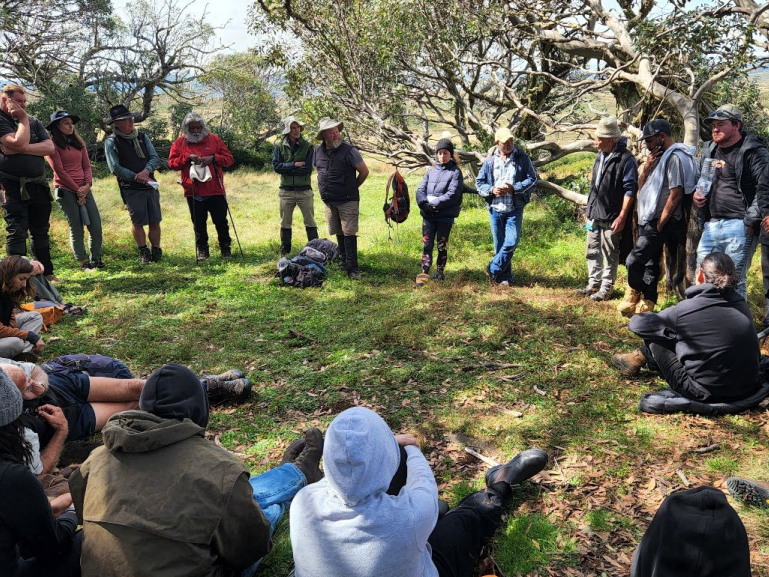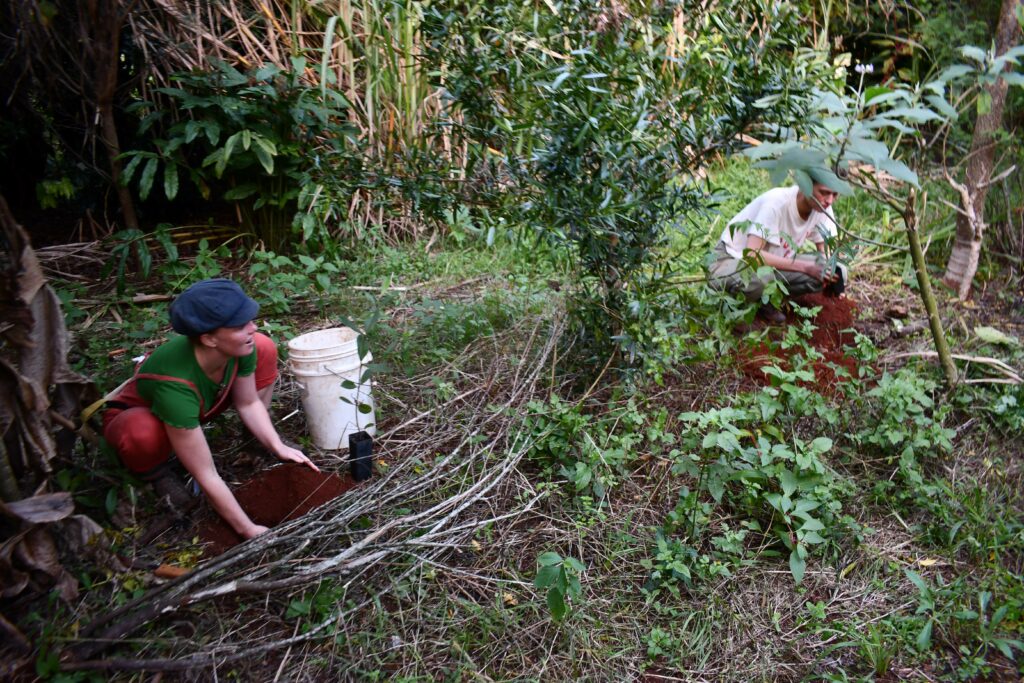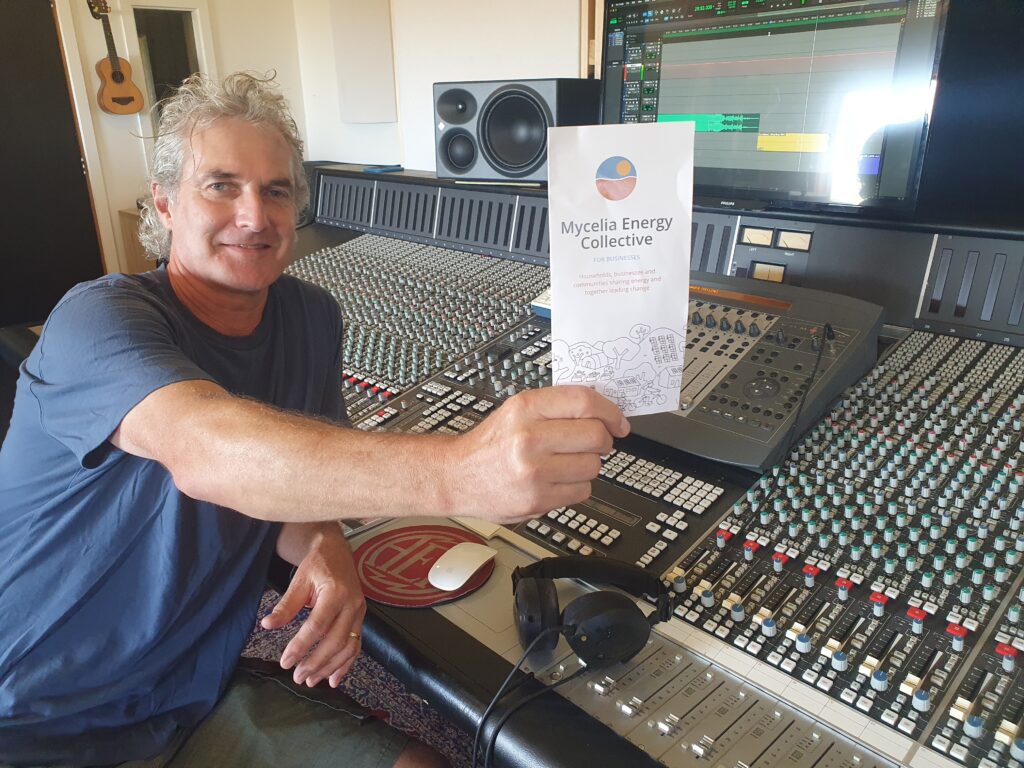Foundation for Rural & Regional Renewal (FRRR)
Youngman Creek rehabilitation volunteer wellbeing program
The Namabunda property, situated in what was once the Big-Scrub subtropical rainforest covering over 75,000 Ha of the Northern Rivers, has degraded over the past 30 years – since its days as a lychee farm due to a lack of maintenance.
Bundjalung Tribal Society (BTS) is primarily a housing organisation providing social housing for the Aboriginal community in and around Lismore in northern NSW. They inherited the property and have spent many years, with volunteer support, trying to rehabilitate it to use for cultural activities and ecological preservation, planting bush tucker and medicines, running training and capacity building programs. Despite their efforts, setbacks like bushfires and the COVID pandemic have hindered progress. Community engagement, vital for sustaining the project, has waned due to volunteer fatigue and lockdown restrictions. BTS see the degradation of the Youngman Creek on the property as symbolic of the broader environmental and social challenges facing the community.
The group sought funding to help mobilise the community and resource them with support and infrastructure, expert training and capacity building to rehabilitate the Creek.
“By rehabilitating the creek, we rehabilitate ourselves and our community.”
With a grant of $9,997, supported by GlobalGiving, the group hosted a series of events at Namabunda which attracted significant community participation, including:

- Build community cohesion through shared activities and cultural workshops.
- Provide training in bush regeneration and ecosystem management for volunteers, especially in photographic monitoring of weed removal and tree planting;
- Offer wellbeing support and workshops led by qualified counselors to address the emotional toll of recent challenges.
- Deliver Bundjalung cultural and ecological knowledge workshops, installing didactic signs about the work to increase awareness and use of Bundjalung ecological knowledge and language, and explaining and demonstrating the value of a healthy waterway ecosystem to neighbouring landowners.
These events will integrate practical activities, such as weeding and planting, with educational sessions on assisted native regeneration techniques. A focus on the Youngman Creek watershed aligns with the project’s theme of “renewal” and underscores the interconnectedness of environmental and community resilience.
Moving forward, Namabunda serves as a model for holistic, community-driven land management that nurtures both people and the environment.
“The thing we are most proud of is the sense of belonging and identity that we have generated through this project in response to the fires, pandemic and then the floods. The thing that was most successful is the deeper engagement between Bundjalung people and non-Indigenous people. The connections that we have built up over the last 18 months is really beautiful to see”.
Jaithmathang TABOO is an Indigenous organisation working on Country in North East Victoria to support regeneration in the landscape’s recovery following the 2019/20 bushfires, and to support cultural healing.
They were awarded a $120,000 grant in April 2022 (to be paid over three years) from FRRR through the Bushfire Recovery Fund, which is supported by the Helen Macpherson Smith Trust and the Sidney Myer Fund. The funding was for a program of annual cool burns and to work with key environment and government stakeholders to share learnings.
The project, titled ‘Beginning the journey to cultural healing on Jaithmathang Country’, specifically aimed to build the capacity of the organisation by contributing to the cost of employing a Jaithmathang descendant for three years to project manage the cool burning program in the Falls Creek region. It also aimed to help in establishing ongoing partnerships and engagement with key stakeholder organisations that can support Jaithmathang to operate sustainably into the future as custodians on Country.

The organisation recently submitted an interim report about what they did in the first year of funding. FRRR’s Program Manager, Danielle Griffin, says the group should be really proud of what they’ve achieved in the first year.
“In year one, Jaithmathang has successfully engaged with the targeted government, First Nations and subject matter expert stakeholders to support their foundational return to Jaithmathang Country. As the Jaithmathang Elders belong to the stolen generation and were removed from Country, it is a privilege to be involved in this significant work to build their capacity for returning to Country and participate in local recovery through disaster management and the intrinsic healing practices that will support Indigenous land and people. The tripartite partnership is a great outcome for year one of this grant,” she said.
The following is an extract from the report, which provides more detail on the background and the partnerships created to date.
The countryside of Bimble is our age-old family tree and it reflects in its rich and diverse lands, the history and heritage of the Jaithmathang Original Peoples. It is our most ancient landscape and it is beautiful and life giving. Mung, Tyer and Buller and all creatures and living things created by Bunjilla are respected and form part of the interconnected ecosystem where each is essential to one another. Our women, men and children are connected through birth right to our Bunjilla Dreaming Bimble, where we reconnect with our spiritual origins and renew our sense of belonging and meaning.
Cultural burning, or the use of fire as a tool for managing landscapes, was an intrinsic part of the connection to country for many Indigenous cultures. Cultural burning is a deeply cultural and spiritual practice that played an important role in the relationship between Indigenous people and our land. It was a tool for managing the land, communicating with the spirits, and maintaining a strong connection to country.
Despite the worsening severity of bushfire activity in Australia, the recognition and adoption of meaningful cultural cool burning as part of a defensive strategy is still in its infancy in current land management practices. We have developed strong partnerships with private landholders and government to achieve the access, consent and participation from all stakeholders required to build an effective approach to fire management, underpinned by traditional knowledge and practices. However, resistance to the introduction of more traditional fire management practice is problematic and will require ongoing work, coordination and support.
Jaithmathang TABOO, Nallawilli Bunjil and CSIRO have creating a tripartite working group to reintroduce traditional cultural burning practices and Indigenous fire knowledge into modern fire management. Nallawilli Bunjil is a commercial drone surveillance and data modelling organisation led by Jaithmathang Elder Roderick McCleod, which provides expertise in virtual modelling to capture real time data about a landscape, including temperature, weather conditions, and for the purposes of fire management, fuel hazard. All parties aim to enhance the health of the land and its Indigenous people.
The outlined project supports developing Monitoring, Evaluation and Research (MER), contributing directly to the Victorian Traditional Owner Cultural Fire Strategy. Jaithmathang TABOO has agreed to work closely with neighbouring nations, including Gunaikurnai Land and Water Aboriginal Corporation. The project will coordinate with the Department of Environment, Energy Climate Action, Federation of Victorian Traditional Owner Corporation, Country Fire Authority and Parks Victoria as priority stakeholders of the project.
CSIRO has developed a bushfire model called Spark, an end-to-end interactive 3D processing tool to predict fire behaviour, based on existing fire spread models. The system has been developed with the capability to be customised for use in risk management, planning, fire spread, research, prescribe burns and fire response.
Spark ingests fuel availability, load, topography and gridded weather based on an ignition point or ignition pattern. It then simulates the temporal and spatial extent of the fire, providing mitigation and contaminate strategies for ongoing bushfires. The project will pilot MER to help start building an accurate cultural burn model for eucalypt forests, undertaking fundamental field observations pre, during and post, documenting on country and operational cool burning methodology.
In reducing the occurrence, intensity and severity of wildfires, cultural burning has an array of interconnected objectives. These include cultural asset protection, habitat protection, biodiversity recovery, fuel reduction, waterway restoration and bush regeneration.
The important role that cultural burning can play in healing and improving the long-term health of country is increasingly being understood, and resources that support cultural burning such as the Traditional Owner Cultural Fire Strategy, support the expansion of cultural burning in Victoria.
The third phase will be to plan and conduct Cultural mosaic burns within the pilot area, sampling major vegetation, typography, weather /moisture and escape risk assessment. A project report will be compiled by CSIRO comparing cultural cool burn management to standard practices today, outlining the potential benefits of Indigenous Fire Practitioners.
Mycelia Renewables is a social enterprise focused on supporting and enabling regenerative economy initiatives with Traditional Owners, rural businesses and regional communities, specifically in the areas of cultural and environmental governance and a fair transition to renewable energy.

Mycelia’s work on the ground to date is diverse and their value is far reaching, focussed on delivering tangible sustainability outcomes with communities, and aimed at strengthening and empowering through a service model of cooperative engagement, knowledge sharing, deep listening and co-design.
Mycelia has two central operations:
- Co-designing and owning or co-owning renewable energy projects with communities and small to medium enterprises (SMEs), to increase the amount of affordable renewable energy and to develop an independent income stream for Mycelia’s charitable purposes
- Supporting communities and SMEs to design and implement regenerative economy projects through their unique services at pro bono, low or full fee rates
Through an FRRR Not-For-Profit Fundraising Account, to date Mycelia has raised more than $70,000 to focus on engaging with local communities and SME’s across Victoria to co-design and implement renewable energy policies and strategies.
The group also created the Mycelia Energy Collective, an initiative which enables households and businesses with and without solar and batteries to share renewable energy through The People’s Grid. Currently supported by 104members, this has been their main focus of late. Mycelia is seeking additional funding to boost organisational capacity over the next 2-3 years to fast track the work being done to hone the Mycelia Energy Collective model to a scale that ensures a sustainable revenue stream. They are also developing partnerships with communities that wish to replicate the model.
In addition to further developing the Collective offerings, Mycelia would like to engage an organisation that can measure and report on the different benefits of the Mycelia Energy Collective, specifically social impact measurements through a community-wealth building lens to clearly demonstrate the value to other communities and future funders.
The work that Mycelia is doing closely aligns to many of FRRR’s purposes and objectives and is a good example of how FRRR can support organisations and communities to raise funds that align to our vision to enhance the long-term vitality and sustainability of remote and rural communities across the country. If you’d like to support them, you can do so via their Fundraising Account.
If your group has a similar project, contact Jo Kemp to explore whether a Fundraising Account could help your organisation achieve its goals.





